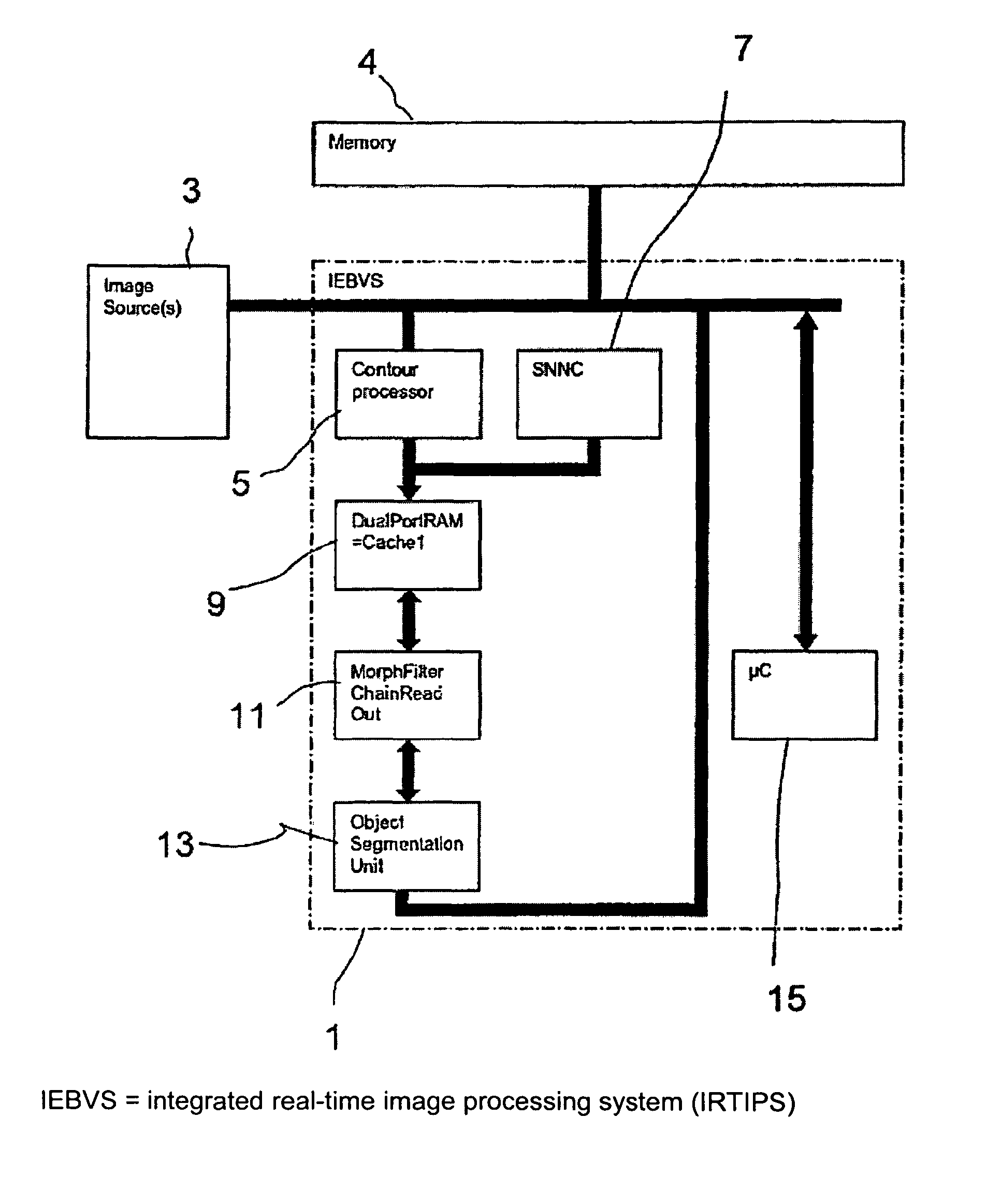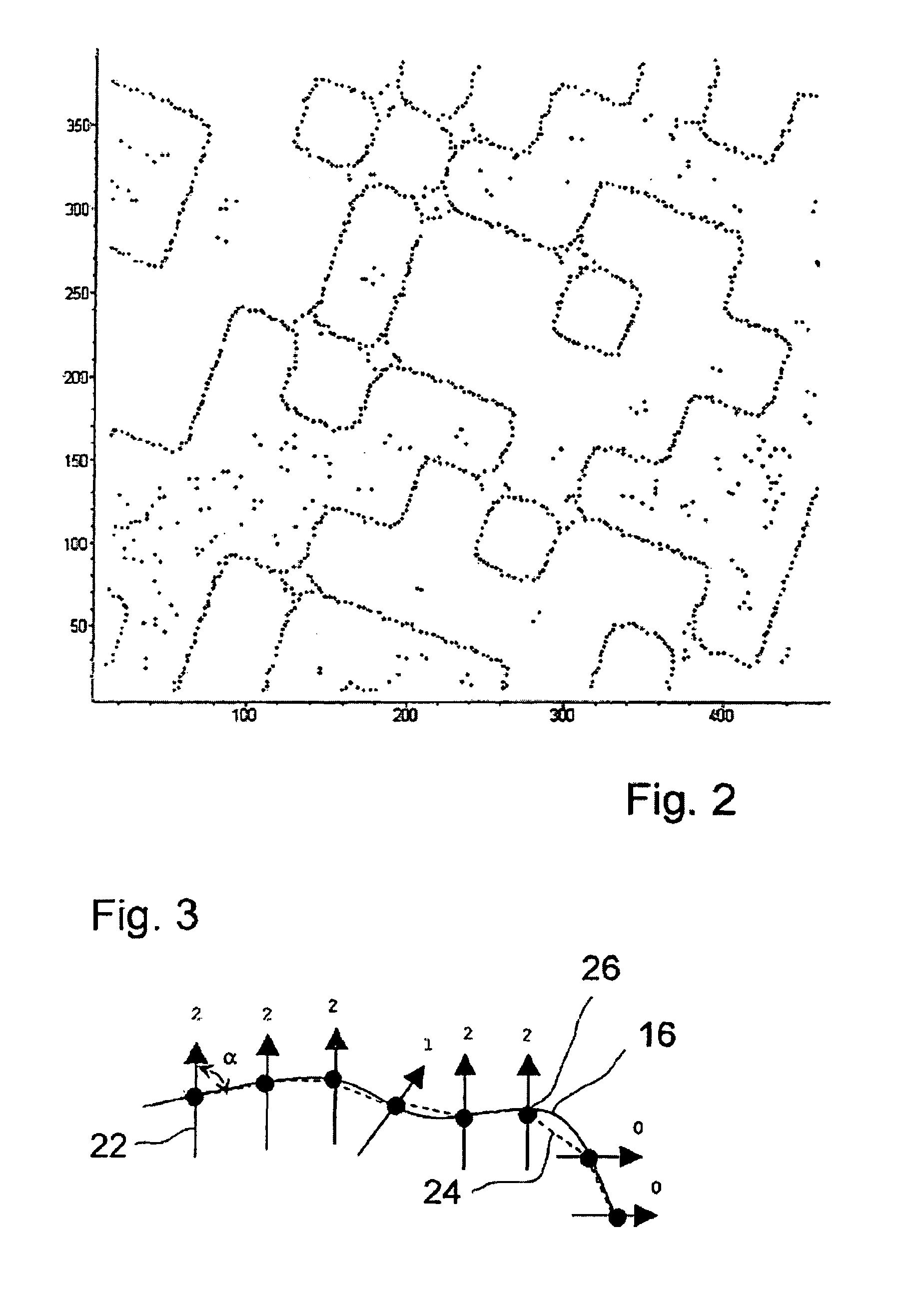Method and apparatus for image processing
a technology of image identification and apparatus, applied in the field of apparatus and methods for image identification, can solve the problems of difficult image identification, difficult image identification, and difficult image identification, and achieve the effect of reliable determination
- Summary
- Abstract
- Description
- Claims
- Application Information
AI Technical Summary
Benefits of technology
Problems solved by technology
Method used
Image
Examples
Embodiment Construction
[0076]FIG. 1 shows the structure or architecture of an apparatus 1 according to the invention in the form of an integrated real-time image processing system (IRTIPS). This IRTIPS comprises an image interface to which one or more image sources 3—for example, CCD cameras—can be connected and which stores the image data as a digital image in an image memory 4. A contour point processor 5 in the form of an integrated hardware unit accesses this image memory 4 and is designed to scan data of a digital image stored in the image memory 4 and to determine contour points with subpixel accuracy and to store this information as continuous list data in a memory. The contour point processor 5 delivers the coordinates and selected features of contour points in list form. Features are, for example, gray scales or colors of the adjacent regions, contrasts, or directions.
[0077]The coordinates are output with subpixel accuracy within the “regions of interest”—for example, within horizontally arranged...
PUM
 Login to View More
Login to View More Abstract
Description
Claims
Application Information
 Login to View More
Login to View More - R&D
- Intellectual Property
- Life Sciences
- Materials
- Tech Scout
- Unparalleled Data Quality
- Higher Quality Content
- 60% Fewer Hallucinations
Browse by: Latest US Patents, China's latest patents, Technical Efficacy Thesaurus, Application Domain, Technology Topic, Popular Technical Reports.
© 2025 PatSnap. All rights reserved.Legal|Privacy policy|Modern Slavery Act Transparency Statement|Sitemap|About US| Contact US: help@patsnap.com



